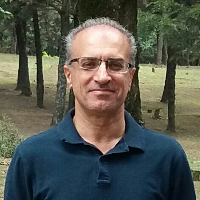Seed germination response of two safflower species (C. oxycanthus and C. glaucus) in response to temperature and water potential during Afterripening
The wild species of safflower have different degrees of non-deep physiological dormancy, which affects the seeds germinability under different environmental conditions. Afterripening (dry storage) of seeds with non-deep physiological dormancy can increase their germination by releasing of seed dormancy. Also, it has been found that according to the afterripening period, the germination response of some species changes to temperature and water potential. Wild species of plants are of great importance due to their use as genetic resources in breeding programs. On the other hand, knowing the characteristics and needs of their germination under different environmental conditions leads to facilitating the reproduction and preservation of these valuable genetic resources. Therefore, the present study was conducted to investigate the germination response of safflower wild species to temperature and water potential during different afterripening period.
In this study, the seeds of two wild species, C. oxycanthus and C. glaucus, were Afterripened for 0, 2, 4, 6, and 12 months at 25°C. After each afterripening period, the percentage and rate of seed germination at temperatures of 5, 10, 15, 20, 25, 30 and 35 ℃ were checked and the cardinal temperatures of germination were calculated. Also, the response of germination to different water potential levels including zero, -0.2, -0.4, -0.6 and -0.8 MPa was investigated.
The results showed that afterripening the seeds for 2-6 months increased the germination percentage of the seeds compared to the control, while the germination percentage decreased in the treatment of 12 months afterripening. In addition, the seeds of C. oxycanthus and C. glaucus species were sensitive to light and gibberellic acid application, and in the presence of these treatments, the germination percentage increased. These findings showed that both species have different degrees of non-deep physiological dormancy. However, the species C. glaucus had higher dormancy. Also, different afterripening periods led to an increase in basic, optimum and germination ceiling temperatures compared to fresh seeds. Examination of the germination response of the seeds of the two studied species showed that in both species, with the increase in the duration of the afterripening period, the base water potential for 50% germination (ψb50) became more negative, and hence, tolerance to drought stress increased during the afterripening period. Nevertheless, afterripening for 12 months significantly increased the hydrotime coefficient (θH) and actually decreased the germination rate compared to other treatments.
In summary, afterripening of seeds in safflower wild species during a suitable period of time (2-6 months) can lead to the improvement of their germination characteristics under different temperature and humidity conditions. In addition, it should be noted that long-term storage of seeds can lead to a decrease in the quality of seeds.
- حق عضویت دریافتی صرف حمایت از نشریات عضو و نگهداری، تکمیل و توسعه مگیران میشود.
- پرداخت حق اشتراک و دانلود مقالات اجازه بازنشر آن در سایر رسانههای چاپی و دیجیتال را به کاربر نمیدهد.


